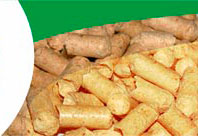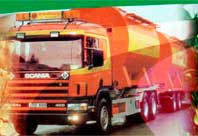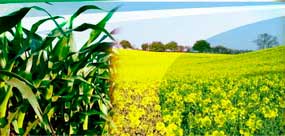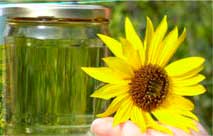Torrefaction and pelleting
The purpose of the torrefaction and pelleting plant is the manufacturing of torrefied pellets. Main process steps for the production of torrefied pellets are the torrefaction of biomass, and the consecutive pelleting of the torrefied biomass. Torrefaction is a thermo-chemical treatment of biomass in the 280 – 340 degrees Celsius range. In this process the biomass partly (especially the hemi-cellulose) decomposes, giving off various types of volatiles. The remaining torrefied biomass (solid) has approximately 30% more energy content per unit of mass.
The second process step is pelleting. Pelleting is a well known and proven method for mass densification. Torrefied biomass allows for higher levels of mass densification(620-650 kg/m3) than regular biomass(820-850 kg/m3).
Our company uses this technology for the torrefaction of biomass. In the Torbed reactor, a diffuse bed of particles is held in cyclonic motion while exposed to a high velocity gas stream. Faster reaction kinetics (among others) make the Torbed-reactor far better equipped than any other reactor for torrefaction, as has been confirmed by many research institutions (among others, ECN and KEMA from the Netherlands). Due to the nature of the torrefaction process, the variety of biomass that can be torrefied is not limited to wood residuals: in principle, any biomass containing biopolymers is suited for torrefaction.
Product economics
Conventional wood pellets (or biopellets) offer superior performance on all relevant characteristics when compared to untreated biomass. Relevant characteristics are heating value, grindability, combustion nature, storage, and transport and handling characteristics. Compared to conventional wood pellets, torrefied pellets contain substantially more energy per unit of volume when compared to biopellets (18-20 GJ/m3 versus 10-11GJ/m3), due to a higher energy density and a higher mass density. Landed costs in The Netherlands are estimated to be ? 4.60 per GJ. This compares to ? 6.40 per GJ for conventional wood pellets, the second most competitive biomass to date. In addition to the lower cost per GJ, torrefied pellets are homogeneous, hydrophobic, free of biological activity, easier to grind, and produce less smoke upon incineration.
OUR PLANS
Our company plans to roll out a series of plants for the torrefaction and pelleting of biomass (especially sawdust, wood chips, and other wood residues). We have exclusive rights to use the technology for torrefaction as a pre-step for pelleting. Our strategy is twofold. We will produce and sell torrefied pellets, and we will enable customers to produce torrefied pellets for proprietary use.
Any copying and distributing the material of Ukrainian Biofuel Portal
without active hyperlink is stricly prohibited !
Link to this news: Torrefaction and pelleting
Copy & Paste This Code to your website:
Views: 18904 Added: 25-06-2008
Average Rating:
Torrefaction and pelleting







